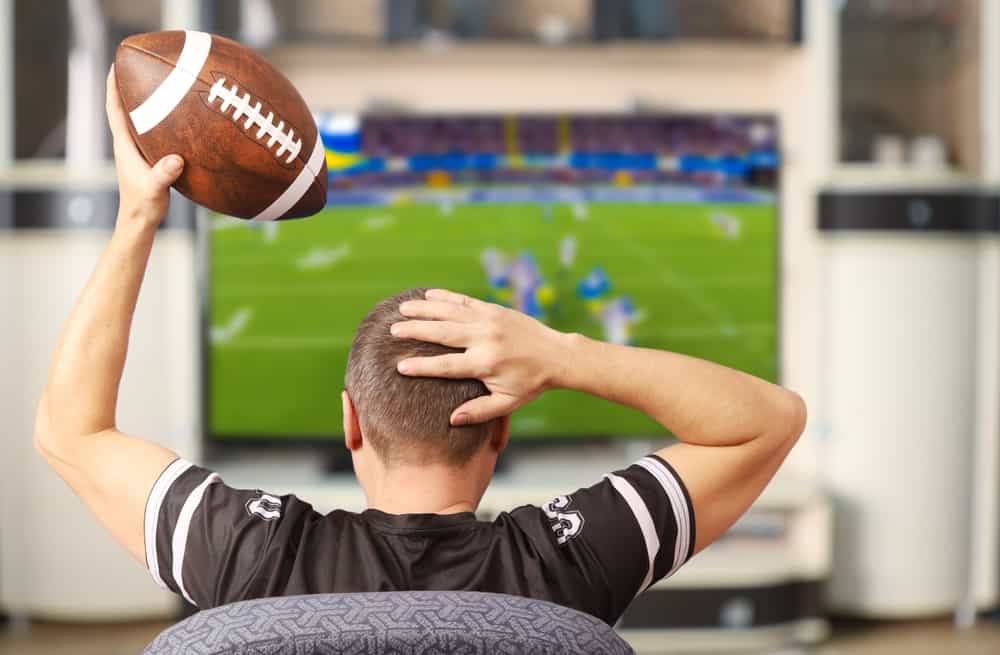
Die-hard sports fans know how important it is to be able to catch all your favorite NFL action live, but cord-cutters and streaming-only households know the frustration a laggy video can cause. Nobody wants to miss their favorite player’s best play of the game, and no one wants to scramble to troubleshoot their connection while their favorite team is on the field.
Don’t let a slow internet connection or lag ruin your “Thursday Night Football” streaming action. Follow our guide to identify common indicators of video lag and common fixes.
What Is Lag?
Network latency is the amount of time it takes for a signal to travel from your computer across the internet to the server with the information you’re looking for and back to your computer. When streaming video is concerned, such as streaming “Monday Night Football” without cable, there isn’t a ton of information being transferred. Sometimes our home networks are laid out inefficiently, however, increasing the time it takes for the signal to bounce back and forth from our preferred streaming device.
“Lag” is the name for an increase in network latency. The easiest way to reduce video lag is to reduce your ping time, which measures the amount of time it takes for information to leave your home machine, hit the video server, and return to your machine. Ping times are usually measured in milliseconds; the higher the ping, the more lag you have to deal with. If upgrading your internet service is out of the question, decreasing lag can help speed up your connection.
Long Buffering Times

If you find yourself stuck with buffering video and long load times that ruin streaming “Sunday Night Football” for you and your friends, your wireless network may be the culprit.
Buffering isn’t an issue when a wireless network is fast enough to keep up with the video you’re watching. Generally, even livestreams — such as a live football broadcast — have a few seconds of delay built into them to ensure smooth playback.
If your network isn’t fast enough to keep up with a video stream, however, then your video will pause while the buffer fills. The easiest way to reduce buffering delays is to decrease your ping, and there are two main ways to do so: You can either plug your device into your modem using an Ethernet cable or decrease the distance between your streaming device and wireless router.
Hardwiring your streaming device to your modem with an Ethernet cable will both stabilize and speed up your network connection, which means you can buffer and load more quickly and get back to enjoying the game sooner. If you can’t connect your streaming device directly to your modem, then reduce the distance between your streaming device and router. Decreasing the distance your wireless signal travels can lessen the time it takes for the signal to make its round trip.
If decreasing the distance between your router and your streaming device is out of the question, look into a Wi-Fi extender or mesh network to eliminate wireless dead zones in your home.
The Action Looks Choppy
Sometimes you’ll find your video stream looks more like a bad stop-motion video — the players’ movements look choppy and nothing moves smoothly on screen. When the score is tied with just a few seconds left in the fourth quarter, you want to ensure you catch all the action. A choppy video won’t cut it.
The quickest and easiest way to reduce video lag is to close any other applications that may be using your bandwidth. Kick the kids off the Xbox, close any programs running on your computer, stop or pause anything downloading, and quit scrolling through social media.
The Audio Doesn’t Match the Video
If the audio is disjointed from the video, it typically means something is wrong with your buffering. Your computer — and any other streaming device — processes audio more quickly than video, especially with high-resolution videos.
Even though it’s annoying, remedying this desynchronization between video and audio data is fixable. If you aren’t running the most updated version of your streaming application, the first step is to update the app.
If you’re already running the current version of your streaming app, you may try power cycling your router or modem. To do that, simply power off and unplug your modem or router, wait 10 minutes, and then reconnect it. It isn’t the most convenient option in the middle of a live broadcast, but if there is a simple bug in your connection causing video lag issues, this is an almost surefire way to squish it.
Your Video Quality Deteriorates

One second you can read the name on every player’s jersey, and the next you’re only vaguely aware those pixelated shapes moving across the screen are football players. If none of the previous solutions have helped or are viable for your home network, try switching the wireless band your streaming device uses.
Wireless networks broadcast over two different frequencies: 2.4 GHz (gigahertz) and 5 GHz. More devices are 2.4 GHz capable than 5 GHz capable, so you can think of the 5 GHz band as the carpool lane. With decreased traffic, the signals can travel faster, which means you get to watch your favorite team in higher quality.
